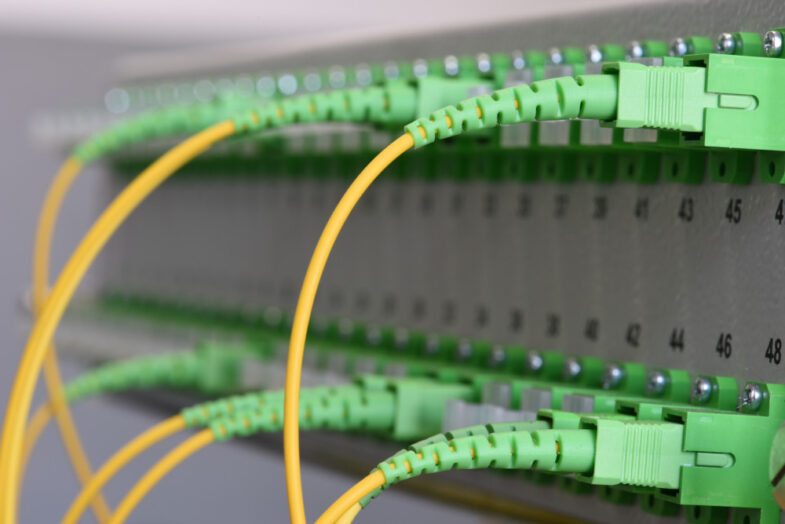The internet has come a long way since its inception, and so has its impact on our lives. In particular, the residential internet has evolved drastically over the past few decades, enabling remote work and learning like never before. In this article, we will explore the evolution of the residential internet and its impact on remote work and learning.
Evolution of Residential Internet
The evolution of the residential unlimited internet has been a significant factor in the transformation of the way we live, work, and learn. The first residential internet connections were slow and unreliable dial-up connections that could only transmit data at a maximum speed of 56 kilobits per second. Today, residential internet connections can transmit data at speeds up to 10 gigabits per second, making it possible to stream high-definition video, participate in virtual meetings, and attend online classes.
Dial-Up Connections
The first residential internet connections were dial-up connections, which required a modem to connect to the internet via a telephone line. Dial-up connections were slow and unreliable, and could not support the demands of modern internet usage. They also tied up the telephone line, making it impossible to make or receive calls while using the internet.
Broadband Connections

Source: pinterest.com
The introduction of broadband connections such as Digital Subscriber Lines (DSL) and Cable improved the speed and reliability of internet connections. DSL connections use existing telephone lines to transmit data, while cable connections use coaxial cables. Both types of connections offer higher speeds than dial-up connections, making it possible to stream video and download large files.
Fiber-to-the-Home (FTTH) Technology
The most significant development in the evolution of residential internet has been the introduction of Fiber-to-the-Home (FTTH) technology. FTTH connections use fiber-optic cables to transmit data at much higher speeds than other broadband connections. This technology can support speeds up to 10 gigabits per second, making it possible to stream 4K video, participate in virtual reality experiences, and download large files in seconds.
Impact of FTTH Technology
The impact of FTTH technology on residential internet has been transformative, enabling remote work and learning, online gaming, and streaming high-definition video. It has also enabled the Internet of Things (IoT), making it possible for smart devices to communicate with each other in real time. The increased speed and reliability of FTTH connections has led to increased productivity, job satisfaction, and cost savings for both businesses and individuals.
Challenges in Implementing FTTH

Source: linkedin.com
The implementation of FTTH technology has been challenging due to the high costs involved in laying fiber-optic cables in every home. It requires significant investment in infrastructure and coordination with local governments and utilities. However, the benefits of FTTH technology have been shown to outweigh the costs in terms of increased economic growth, improved quality of life, and reduced carbon emissions.
What is a Dark Fiber Network?
Dark fiber networks are a fascinating aspect of modern telecommunications infrastructure. The “dark fiber” refers to optical fiber cables that have been installed but are inactive or unused. These fiber optic cables, composed of thin strands of glass or plastic, transmit data as pulses of light and are renowned for their capacity to carry data over long distances at exceptionally high speeds. Here are five compelling advantages of having dark fiber networks:
1. Scalability: Dark fiber networks allow organizations to scale their data transmission capabilities rapidly. This scalability is invaluable in our data-driven world.
2. Enhanced Security: With exclusive access to the fiber, dark fiber networks can offer increased security, mitigating the risk of data breaches or interference.
3. Cost-Efficiency: Utilizing existing dark fiber can be more cost-effective and environmentally friendly than installing entirely new infrastructure, as it reduces the need for extensive construction.
4. Low Latency and Reliability: Dark fiber networks often offer low latency and high reliability, making them ideal for applications like high-frequency trading, data centers, and telecommunications.
Marketplaces and Future Prospects
Some regions have marketplaces or exchanges where dark fiber capacity is bought and sold. This provides a dynamic ecosystem where companies with excess dark fiber capacity can sell it to others in need, fostering efficient resource allocation.
Dark fiber networks represent a hidden gem within the telecommunications landscape, offering the potential for organizations to future-proof their data transmission capabilities while remaining economically and environmentally conscious. As our reliance on data continues to grow, the role of dark fiber networks in expanding and optimizing our communication infrastructure is set to become even more crucial.
Impact on Remote Work
The impact of residential internet on remote work has been significant, as it has revolutionized the way people work. With high-speed internet connections, employees can now work from the comfort of their homes or any other location, without the need to be physically present in an office.
Increased Flexibility and Productivity
The ability to work remotely has given employees greater flexibility, as they can set their own work hours and schedules. This increased flexibility has led to higher job satisfaction, improved work-life balance, and reduced stress levels. Moreover, remote work has also been shown to increase productivity, as employees have fewer distractions and can focus more on their work.
Cost Savings for Companies and Employees
Remote work has also resulted in significant cost savings for both companies and employees. Companies can save on overhead costs such as rent, utilities, and office supplies, while employees can save on commuting costs, work attire, and eating out.
Access to a Wider Talent Pool

Source: pinterest.com
With the ability to work remotely, companies can now access a wider talent pool, as they are no longer limited by geographical location. This has enabled companies to hire the best talent from anywhere in the world, regardless of where their physical office is located.
Challenges of Remote Work
However, remote work also presents its own set of challenges, such as the need for self-discipline, the potential for social isolation, and the need for reliable technology. To overcome these challenges, remote workers need to establish a routine, maintain regular communication with their colleagues and supervisors, and have a reliable internet connection and technology infrastructure.
Impact on Remote Learning
The impact of the residential internet on remote learning has been profound, as it has opened up new opportunities for people to access education and training programs from anywhere in the world. With high-speed internet connections, students can now attend virtual classes, participate in online discussions, and submit assignments from the comfort of their own homes.
Increased Access to Education
One of the most significant impacts of residential internet on remote learning is increased access to education. People who live in remote areas or have physical disabilities can now access education without having to leave their homes. This has led to greater inclusivity and diversity in education, as people from all backgrounds can now access the same educational opportunities.
Flexibility and Convenience

Source: freepik.com
Remote learning also offer greater flexibility and convenience than traditional learning methods. With the ability to attend classes online, students can now set their own schedules and work at their own pace. This has enabled students to balance their studies with other commitments such as work and family responsibilities.
Technology-Enhanced Learning
The use of technology in remote learning has also enhanced the learning experience. With the use of multimedia tools such as videos, graphics, and interactive simulations, students can engage with the content in a more dynamic and immersive way. Moreover, remote learning platforms often provide access to a wide range of resources such as e-books, journals, and academic articles, which can enrich the learning experience.
Challenges of Remote Learning
However, remote learning also presents its own set of challenges, such as the need for self-motivation, time management skills, and the potential for social isolation. To overcome these challenges, remote learners need to establish a routine, participate in virtual study groups, and seek out opportunities for social interaction.
Conclusion
The evolution of the residential internet has had a significant impact on remote work and learning. With high-speed and reliable internet connections, people can work and learn from anywhere in the world. This has opened up new opportunities for individuals and businesses, making it easier to stay connected and productive in a world that is increasingly reliant on technology.
